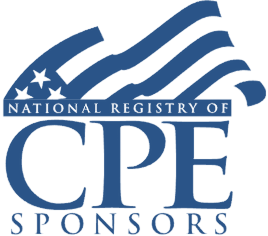Welcome! Save 30% on all CLE, CPE, and Professional Skills webinars, plus 15% off any annual pass with code HOLIDAY25
About the Course
Introduction
This webinar will review unique planning strategies for family businesses. Our adept federal income tax panelist will provide insights into maximizing Social Security benefits, lowering payroll taxes, IRA contributions, transferring ownership interests, and making retirement contributions for family businesses.
Description
With labor in short supply, now could be an ideal time to employ family members in the company business. The longstanding benefits of using family include shifting income from higher tax brackets to lower brackets and generating earned income for retirement contributions. Wages paid to children under age 18 by sole proprietors and partnerships in which each partner is a child's parent escape Social Security, Medicare, and unemployment tax.
Deciding a reasonable salary is difficult but significantly affects the overall earnings of a business. Married business owners should incorporate Social Security planning when setting salaries. A spouse might be added to the payroll to ensure Social Security eligibility, or salaries might be increased to maximize Social Security benefits. Tax professionals working with closely held businesses need to know the tax-saving opportunities for family businesses.
Listen as our closely-held business expert explains key considerations of family businesses.
Presented By

Mr. Pon has been in practice since 1986 providing comprehensive accounting, tax, payroll, and business advisory services. He specializes in tax preparation, tax representation, tax planning, business planning, financial planning, and estate planning. Services include IRS and state audit representation, business startup services, and charitable planning. Mr. Pon is a frequent author and lecturer to financial and legal professionals and the public on tax and financial planning topics.
-
BARBRI is a NASBA CPE sponsor and this 110-minute webinar is accredited for 2.0 CPE credits.
-
BARBRI is an IRS-approved continuing education provider offering certified courses for Enrolled Agents (EA) and Tax Return Preparers (RTRP).
Date + Time
- event
Thursday, September 22, 2022
- schedule
1:00 p.m. ET./10:00 a.m. PT
- Tax strategies for family businesses: an introduction
- Paying family members
- Tax savings
- Younger kids, older kids, and other family members
- Retirement planning
- Owners
- Children
- Social Security
- Self-employment health insurance deduction
- Owner's salary
- Transferring ownership interests
- Other strategies
The panelist will cover these and other key issues:
- Which businesses are not required to pay Social Security taxes for children?
- When are insurance premiums deductible as SE insurance?
- When should a taxpayer consider hiring a spouse?
- When can a taxpayer make a ROTH contribution for a child?
Learning Objectives
After completing this course, you will be able to:
- Identify taxpayers eligible to deduct self-employment health insurance
- Determine when a taxpayer can make a ROTH contribution for a child
- Decide when a spouse should be added to the payroll for Social Security benefits
- Ascertain which taxpayers could benefit from hiring their children
- Field of Study: Taxes
- Level of Knowledge: Intermediate
- Advance Preparation: None
- Teaching Method: Seminar/Lecture
- Delivery Method: Group-Internet (via computer)
- Attendance Monitoring Method: Attendance is monitored electronically via a participant's PIN and through a series of attendance verification prompts displayed throughout the program
- Prerequisite: Three years+ business or public firm experience preparing complex tax forms and schedules, supervising other preparers or accountants. Specific knowledge and understanding of individual income taxation, including itemized deductions, individual income tax credits, net operating loss limitations including carrybacks and carryforwards.

BARBRI, Inc. is registered with the National Association of State Boards of Accountancy (NASBA) as a sponsor of continuing professional education on the National Registry of CPE Sponsors. State boards of Accountancy have final authority on the acceptance of individual courses for CPE Credits. Complaints regarding registered sponsons may be submitted to NASBA through its website: www.nasbaregistry.org.

BARBRI is an IRS-approved continuing education provider offering certified courses for Enrolled Agents (EA) and Tax Return Preparers (RTRP).

BARBRI CE webinars-powered by Barbri-are backed by our 100% unconditional money-back guarantee: If you are not satisfied with any of our products, simply let us know and get a full refund. Contact us at 1-800-926-7926 .
Unlimited access to premium CLE courses:
- Annual access
- Available live and on-demand
- Best for attorneys and legal professionals
Unlimited access to premium CPE courses.:
- Annual access
- Available live and on-demand
- Best for CPAs and tax professionals
Unlimited access to premium CLE, CPE, Professional Skills and Practice-Ready courses.:
- Annual access
- Available live and on-demand
- Best for legal, accounting, and tax professionals
Unlimited access to Professional Skills and Practice-Ready courses:
- Annual access
- Available on-demand
- Best for new attorneys
Related Courses
Recommended Resources

How CPE Can Bridge the Gap Between What You Know and What You Need to Know
- Career Advancement



